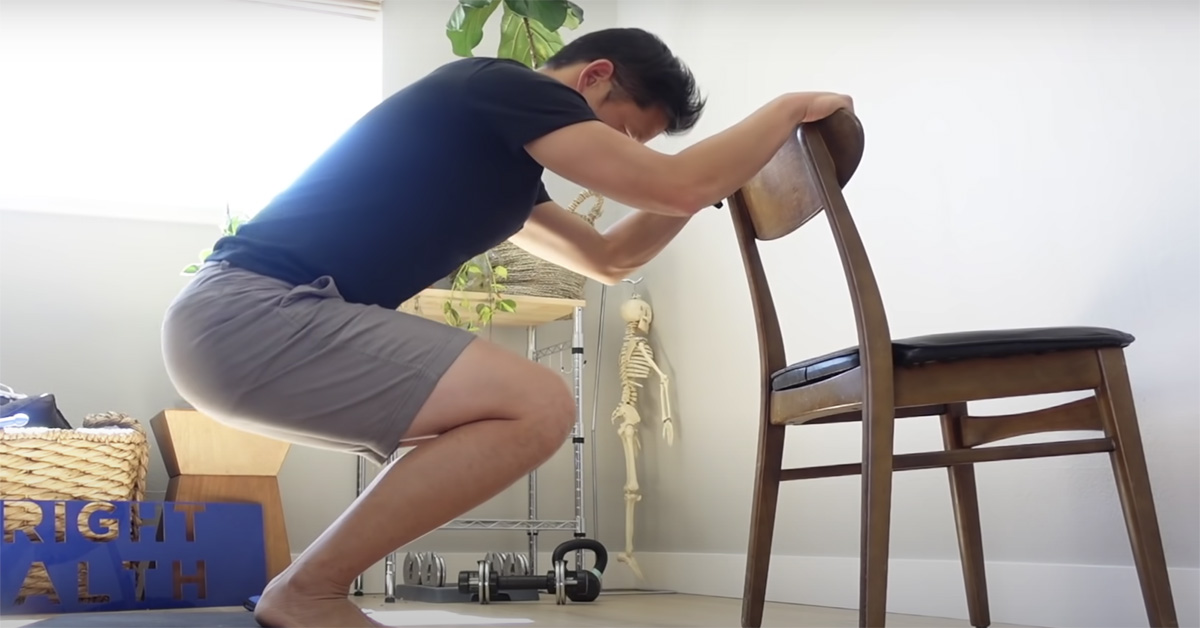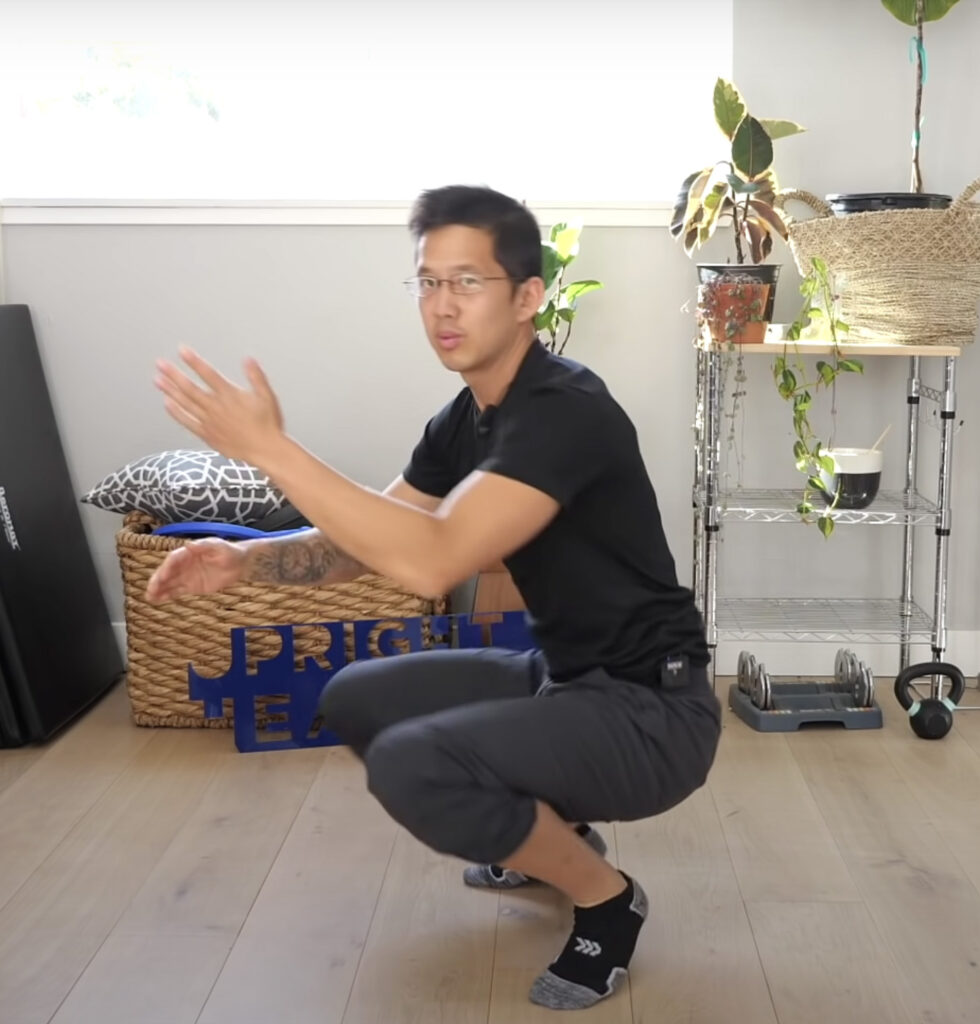The Asian Squat: The History & Health Benefit

If you have ever traveled or learned about Asian cultures, you noticed many do a type of Asian squat. Different cultures have used the Asian squat for centuries for various reasons.
Here’s everything you need to know about the Asian squat and why it’s used. Also, check out the health benefits of the movement and how to perform them.
What is an Asian Squat?
An Asian squat is a type of deep squat where you’re flatfooted with your glutes nearly touching the floor. It’s a way many Asian cultures sit in a deep squat to sit and relax.
Performing Asian squats has numerous health benefits and gradually improves strength and flexibility. Using Asian squat variations will increase the longevity of your body and go into old age with little to no disabilities.
The History of the Asian Squat

The Asian squat is part of the tradition of many cultures. Not only Asian cultures but also African and Middle Eastern cultures also historically performed deep squats.
Seeing these deep squats is a bit strange for Westerners, but there are many reasons why these cultures do them.
This style of squat is used because of these reasons:
- Cultural Tradition
- Toileting
- Practicality
- Flexibility/Mobility
- Health Benefits
Most of these cultures that use a type of Asian squat really didn’t really choose to do it. Their use of this deep squat was a natural movement that they just did to rest and eat.
It was a practical way of sitting to rest while also being able to maneuver. Practicing Asian squatting over time improved user’s flexibility and strength while prolonging their lives.
Also, in many of these countries they have a different bathroom situation. Instead of a toilet, many places in Asia just have a hole in the floor to use.
Since deep squatting is normal in these cultures, they just drop down easily to take care of business.
The Health Benefits of the Asian Squat
There are many health benefits to practicing the Asian squat. Here are some of the most notable health benefits listed below.
- Improved Flexibility
- Improved Mobility
- Improved Posture
- Improved Digestion
- Improved Longevity
- Improved Strength
- Decreased Pain
These numerous health benefits are why so many people use a form of the Asian squat. By doing a natural body movement, you can gain all of these health benefits and be in less pain. Using the Asian squat can improve your overall quality of life and keep you strong into old age.
Asian Squat vs. Western Squat

There are some noticeable differences between the Asian squat and the Western squat. The Western squat is performed with heels up and a 90-degree depth at the knees.
Asian squats are generally performed flatfooted, with the glutes nearly touching the floor. Westerners used to sit in an Asian style squat, but over time, the depth of their squat lessoned.
This was mainly due to the innovation of sanitation systems, where toilets were created. Westerners didn’t have to sit as low due to the elevated toilets, which changed their squat.
Asian Squat vs. Slav Squat
Another type of squat similar to the Asian squat is the Slav squat. A Slav squat is a type of deep squat used by Eastern European cultures, like the Slavs.
It looks exactly the same as an Asian squat, but there’s one difference. In a Slav squat, the feet are placed slightly past shoulder-width.
The Slav squat has the exact same b benefits as the Asian squat.
How to Do the Asian Squat
The Asian squat is a simple movement that can be performed in 4 steps.
- Stand straight, with your feet shoulder-width apart. If you’re tall, stand in a slightly wider stance to accommodate.
- Keep your feet flat and stop your ankles from rolling inward.
- Sit down until your buttocks touch your heels and your calves and thighs touch.
- Hold squat.
The Asian squat is that simple, but it does take time to develop the strength to sit for long periods. People from different cultures who perform deep squats naturally learn this form of squatting over time.
That is why it’s so easy for them to hold a deep squad for long periods, while many Westerners can’t do them.
Get into an Asian squat gradually by holding a bar for balance as you’re squatting. From there, you can start with your heels up as you develop the strength and balance to go flatfooted. Once you put in the time, you can be doing an Asian squat with ease
Why is it Hard For Westerners to Do the Asian Squat?
The reason why so many Westerners find it hard to do an Asian squat is because it’s a foreign move to them. They didn’t grow up getting into this deep squat, so they have trouble first learning the movement.
The only way to improve your Asian squat is by practice and time. People who grew up doing the Asian squat developed the strength and balance to hold the squat for long periods.
To learn the Asian squat, you will need to put your time into getting into the position. Over time, you’ll be able to stay in this squat stance for a period of time with no discomfort.
How Can the Asian Squat Relieve Back Pain
Sitting in the Asian squat can even help treat back pain. The reason for this is because, as humans, we’re supposed to be sitting at a 90-degree angle.
When you sit in a deep squat over time, your alignment improves with the strength of your core and lower back.
Continually sitting an Asian squat will improve the strength of your hip flexors and relieve pain. Your weight will be distributed equally, and your flexibility and mobility will stay strong.
Things to Avoid When Doing the Asian Squat
When you perform an Asian squat, there are some incorrect ways to do it, which could injure you. That’s why you should always avoid these three Asian squat mistakes.
- Don’t Squat Fast: Never go into the squat as fast as possible. Always control the movement and activate all your chain muscles.
- Not Using Assistance: Not everyone goes into an Asian squat without assistance. If you aren’t accustomed to this squat, always grab something to hold when going down.
- Not Listening To Body Signals: When people ignore their body signals to stop during a movement like a knee clicking, it can lead to injuries. Also, listen to your body when doing squats and limit your depth until you’re comfortable.






